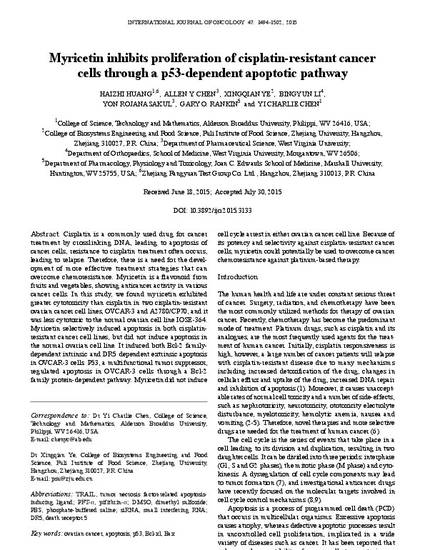
Cisplatin is a commonly used drug for cancer treatment by crosslinking DNA, leading to apoptosis of cancer cells, resistance to cisplatin treatment often occurs, leading to relapse. Therefore, there is a need for the development of more effective treatment strategies that can overcome chemoresistance. Myricetin is a flavonoid from fruits and vegetables, showing anticancer activity in various cancer cells. In this study, we found myricetin exhibited greater cytotoxicity than cisplatin in two cisplatin-resistant ovarian cancer cell lines, OVCAR-3 and A2780/CP70, and it was less cytotoxic to the normal ovarian cell line IOSE-364. Myricetin selectively induced apoptosis in both cisplatin-resistant cancer cell lines, but did not induce apoptosis in the normal ovarian cell line. It induced both Bcl-2 family-dependent intrinsic and DR5 dependent extrinsic apoptosis in OVCAR-3 cells. P53, a multifunctional tumor suppressor, regulated apoptosis in OVCAR-3 cells through a Bcl-2 family protein-dependent pathway. Myricetin did not induce cell cycle arrest in either ovarian cancer cell line. Because of its potency and selectivity against cisplatin-resistant cancer cells, myricetin could potentially be used to overcome cancer chemoresistance against platinum-based therapy.

The version of record is available from the publisher at http://dx.doi.org/10.3892/ijo.2015.3133. Copyright © 2015 Spandidos. All rights reserved.
DOI: 10.3892/ijo.2015.3133